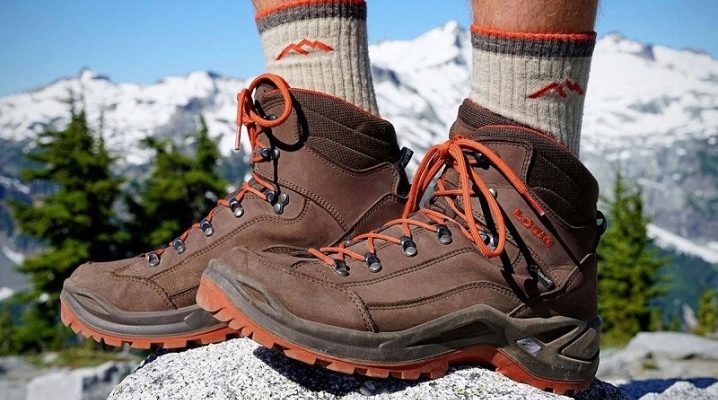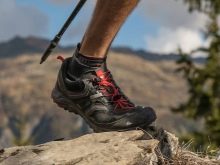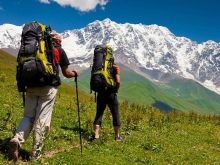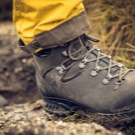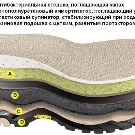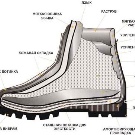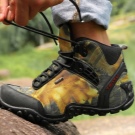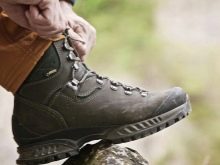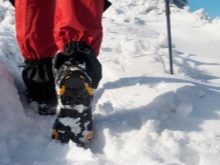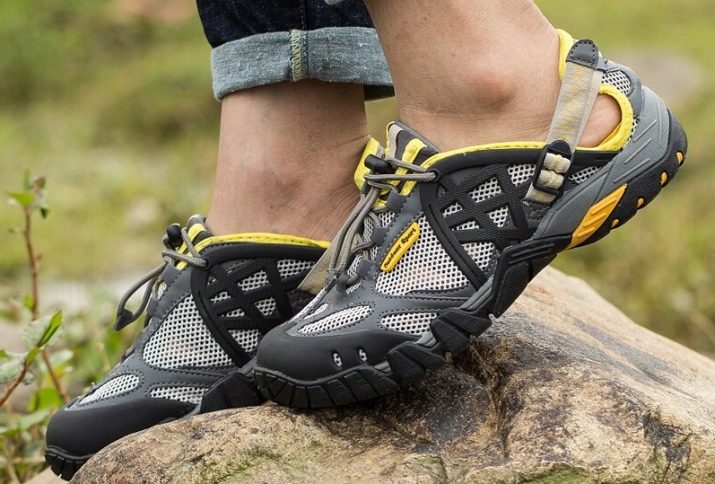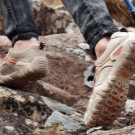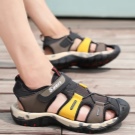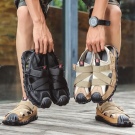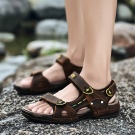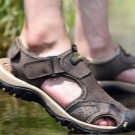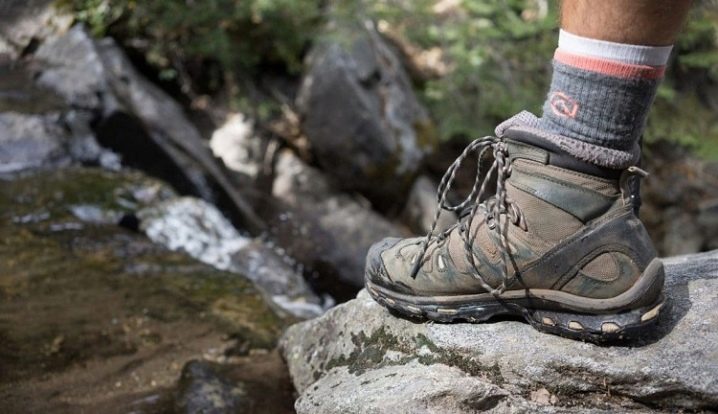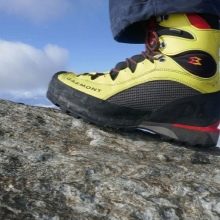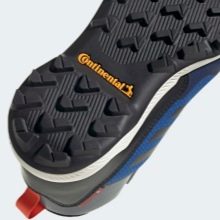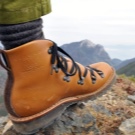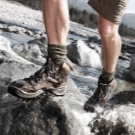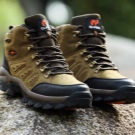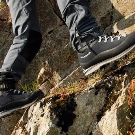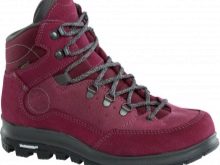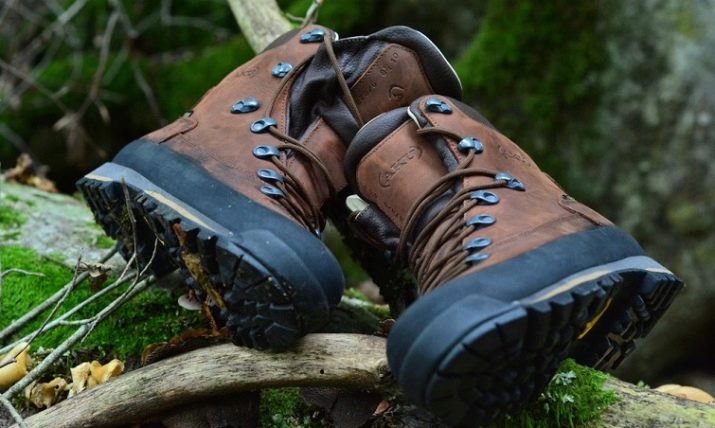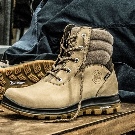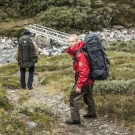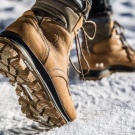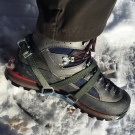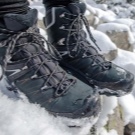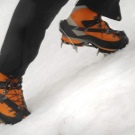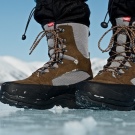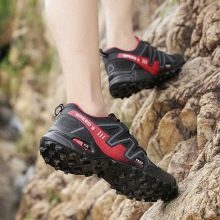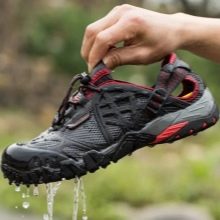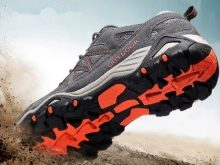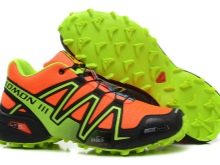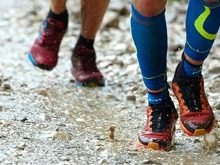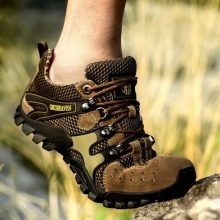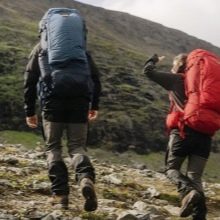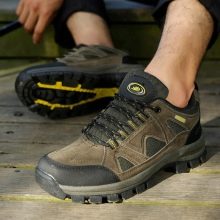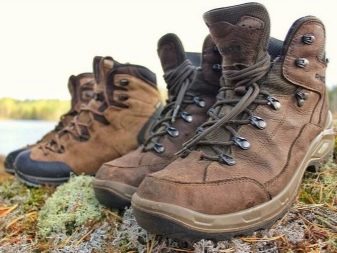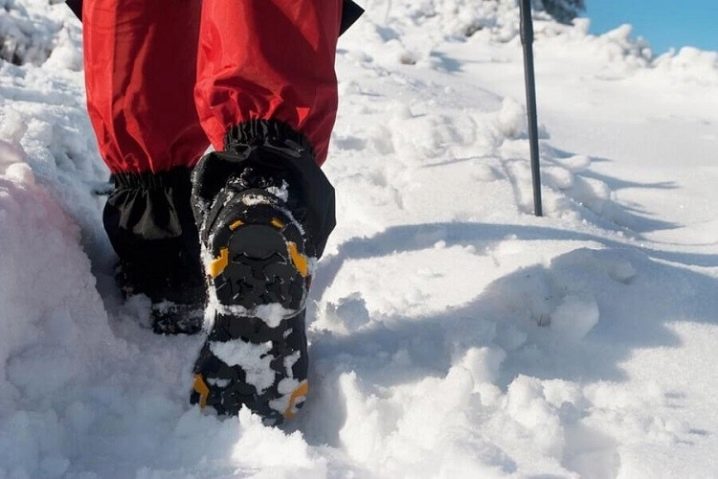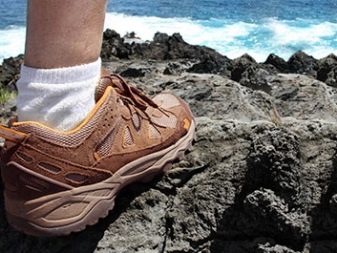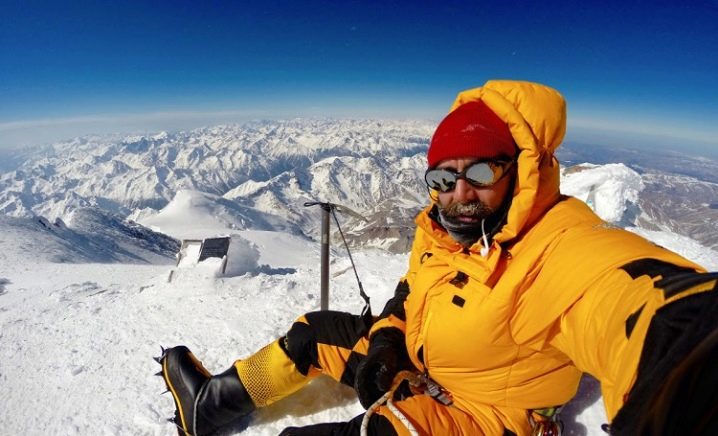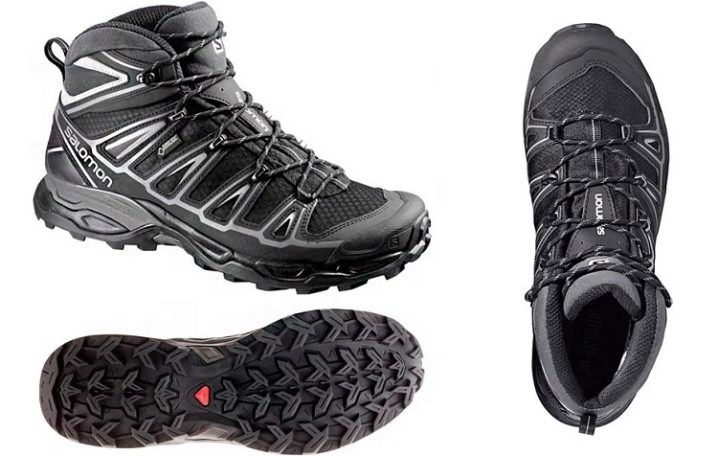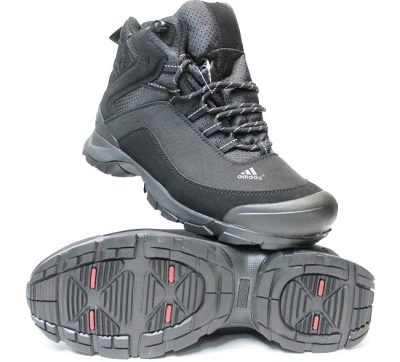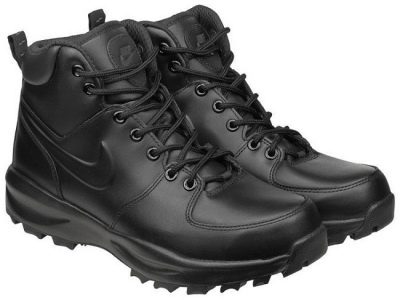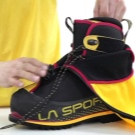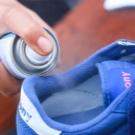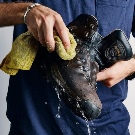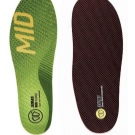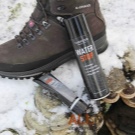Varieties and selection of mountain shoes
Experienced tourists will surely agree that there are primary and secondary things in any equipment. Without a doubt, footwear belongs to the most important element of ammunition. A correctly selected model becomes a guarantee that you will not knock out the soles, rub calluses or wet your feet, and the load on the muscles and joints will be evenly distributed. Only in this case you will be able to get real pleasure from your trip.
Peculiarities
Footwear for hiking and hiking in the mountains must meet the following requirements.
- Strength. It is important that the boots do not come unstuck and do not crawl during a hike when a person is a few kilometers from civilization. In this case, a torn boot will cause serious discomfort, can become a source of injury and ruin the entire journey.
- Moisture resistance. Health primarily depends on this. Wet feet freeze faster. In addition, damp boots cause blisters and chafing.
- Comfort. Shoes should fit comfortably on your feet. If possible, try to wear boots before going up the mountain.
- Travel shoes must provide good protection against injury to the limbs. The principle for climbers is fixation on the ankle joint - this will protect and protect it from dislocation.
- Trekking boots must have an effective ventilation system, otherwise, on summer days, the legs will sweat, and in winter they will freeze from moisture.
- Trekking boots must have a tractor solefor maximum grip. The most advanced models provide for fastening under the "crampons" and have a reinforced ladder so that the sock does not bounce off.
It is important that the shoes are lightweight - they usually weigh 500-700 g.
Views
Experienced climbers know very well what kind of footwear they need. And novice travelers, finding themselves in a specialized store, are often faced with a difficult choice - the range of offered models is off scale, and the difference between them is not clear. First you need to decide on the type of activity.
For hiking
Hiking is a short walk on rugged terrain. Most often these are paths in the vicinity of the city, forest plantations, parks and hills. They are performed in good weather conditions. Depending on the season, trekking sandals or any type of sneaker can be used during these walks.
It is desirable that the latter are positioned by the manufacturer as intended for hiking over rough terrain. - they are more durable, and the outsole provides powerful lugs. If you are going to climb the hills in the rain, then you should give preference to sneakers with a membrane or opt for trekking boots.
For trekking
Light trekking is a kind of intermediate link between hiking and trekking. In fact, this is the same hiking, but slightly more extended in time and terrain. This trip can include long climbs and long descents. Any hiking boots can be worn on this hike.
Ordinary sneakers are not suitable here, it is better to make a choice in favor of lightweight trekking boots, even if you will be walking in hot weather. Unlike sneakers, boots provide effective fixation of the foot, protect the ankle from sprains and scratches. In addition, feet in such shoes are protected from water ingress through the top, sand, dirt and unpleasant insects do not penetrate the skin.
Advice: if snakes and dangerous insects are found in the places where you are going to go, it is better to take overpriced shoes. Trekking shoes have a sufficiently elastic sole, thanks to which the foot feels the relief well, and the athlete can walk more kilometers without feeling tired.
Keep in mind that trekking boots can be used to move around in winter, although they do not provide full protection from the cold, since they do not have a special insulation. However, the combination of nubuck, leather and composites with a membrane lining allows the traveler to move comfortably in temperatures down to minus 5-10 degrees.
For heavy trekking
Heavy trekking involves moving long distances with the conquest of high altitudes and steep descents. Shoes for this kind of activity are a transitional model between specialized mountaineering and trekking shoes. It is distinguished by an unbending sole and the presence of a dense heel counter. The top is made of thickened material.
The difference between these boots and rock climbing shoes is almost imperceptible. Some models additionally provide an insulating layer for operation in frosty weather. These shoes are very popular with professional mountain hikers.
For rock climbing
Mountain climbing shoes are the most challenging. It features high elastic and a multi-layer outsole, often complemented by steel reinforcements. Front and rear there are special mounts for "crampons" and machines for skis. Such shoes have an insulating layer, as well as special protection against moisture and snow penetration.
The two-layer mountaineering shoe has an inner and outer boot. Usually, the upper one is made of cold-resistant plastic, less often it looks like an inflated shoe cover with Velcro - this option is optimal for high-altitude ascents.
If the traveler is not busy with rock climbing, he will not need such a complex model. When crossing on flat terrain, feet in excessively stiff boots will experience constant discomfort.
For running
Running shoes differ from all the above models in the presence of reliable cushioning. Although hilly terrain is much softer than asphalt, the impact on joints can be high.
Cushioning is especially important for beginner runners, as well as for people who have suffered from joint damage and pathology of the musculoskeletal system in the past. Shock absorbers in such models evenly redistribute the load over the entire sole area.
Additional fixation of the foot is provided by inserts in the sole - they increase the torsional rigidity for twisting. In addition, in these models, special attention is paid to the circumference of the foot and heel. For their firm fixation, the heel of the shoe must be tight, not squeezed.
The lacing will need to be strong so that the foot does not dangle inside the shoe. Runners' shoes should provide significant drop - the difference in sole height from heel to toe. Usually, beginners run from the heel, so for a smooth roll you will need shoes with a drop of 8 mm or more. Keep in mind that the thickness of the sole on different sneaker models may vary with the same difference.
How to choose?
In recent decades, membrane technologies have been widely introduced into the production of hiking shoes. The most expensive brands most often use the Gore-Tex membrane, the rest produce it themselves. The membrane is attached to the intermediate fabric so as to form a sock-like inside the boot.
Manufacturers claim that this design protects the feet from moisture, but does not interfere with the removal of steam. - that is, the leg does not get wet, but at the same time it breathes freely. However, this claim is controversial. According to reviews, even the most expensive membrane gets wet after a while.Sometimes even one rainy day is enough. In addition, water often seeps into the boot through the top.
Thermoregulation of such a shoe is in many ways inferior to the "breathability" of shoes without it. This is especially felt when hiking in hot weather. Another disadvantage is that membrane shoes are difficult to dry in the field, you will either have to change your shoes or continue your journey in wet boots.
Boots with a membrane are suitable only for those athletes who have the opportunity to periodically dry it. Shoes will be effective if the hike takes place in dry weather. But for multi-day and multi-week hikes, it is better to give preference to boots without a membrane. Protection from water in them will be created by an inflated rubberized welt along the contour, as well as water-repellent ointments and impregnations.
For traveling on snow or in the case when you have to overcome water obstacles, it is better to give preference to double models, in which the top layer is made of plastic.
For summer
For summer hikes, experienced hikers usually choose trekking boots. They are intended for simple ascents to a height of up to 2 thousand meters. Such models are made using membrane technology. The boots are rigid - this allows you to evenly distribute the weight of the backpack and the weight of the athlete himself. Shoes must be above the ankles to prevent dislocation of the joint.
The outer layer of hiking shoes in the summer is represented by polymer textiles or leather treated with protective impregnations. Moving around in leather shoes is quite comfortable, but when wet, such shoes will dry much longer.
Advice: if the weather forecast promises that one of the days the temperature will drop sharply, then you can additionally bring along insulated shoe covers. They are worn on top of the boots.
For winter
For hiking in the mountains in winter, you will need three-layer shoes designed specifically for high-altitude ascents in the presence of snow and ice. Such footwear certainly provides for fasteners for "crampons". The outer boot should reach almost to the knee to keep warm as much as possible.
Plastic boots are indispensable for ascents of 3 thousand meters and more. For minor climbs, you can wear regular sneakers with galoshes, army or ranger boots. In the absence of tight fixation, the leg will be more comfortable. In general, the choice of boots for mountain tourism should be approached with all responsibility.
It is important to take into account the length and width - overly wide boots will begin to dangle, this dramatically increases the risk of injury. Your best bet is to buy your shoes from specialized retail outlets where you can test the tread on a wide variety of surfaces. Tip: Don't look for a sizeable trekking shoe.
It is important that at the time of descent, your toes do not bump into the boot. To do this, it is better to choose shoes a couple of sizes larger, otherwise you will simply knock your toes. It is advisable to measure footwear for mountain walks in two passes - in the morning and in the evening. This is necessary in order to understand how the boot will sit immediately after waking up and at the end of the day, when the feet are swollen from many hours of stress.
Top Models
For any traveler, footwear is an essential element of all ammunition. That is why it is better to give preference to models of well-known manufacturers who have established themselves as suppliers of quality products for many years.
The rating of the best trekking shoes includes American and German companies, the most famous brands are Vibram, Salomon, Adidas, Meindl and Nike. The assortment of these companies offers both lightweight trekking boots and heavy models for long mountain climbing.
- Salomon. Shoes for men and women from this manufacturer have high performance characteristics.All boots are made of genuine leather, have a durable lacing and a unique lacing system. The undoubted advantage is its low weight.
- Adidas. The boots of this brand are characterized by exceptional traction parameters. All products are manufactured using the most modern technologies to ensure maximum moisture removal and effective shock absorption.
- Nike. The assortment portfolio of this brand includes models with high impact resistance. The company manufactures products for men, women and children.
Keep in mind that even the most reliable and expensive models from reliable manufacturers are only part of the general travel ammunition. Each piece of equipment must be selected competently and thoughtfully.
In addition, shoes must be carried before the hike. Otherwise, any ascent will be associated with the appearance of painful calluses.
Care
The more technologically advanced the shoes, the more complex care they require. Therefore, when buying, you need to ask the sales manager how to take care of such shoes, and purchase all the necessary tools for this.
- Purchase trekking socks to reduce the chances of blisters and scuffs.
- The inner surface of the shoe should be regularly sprayed with hygienic sprays.
- Sports shoes must be dry and clean. This is especially true when it comes to hiking boots. They need to dry thoroughly, before that it is imperative to remove the insole. At the same time, you cannot dry sports shoes on a battery or use special electric dryers - this can cause deformation of the inner surface and make it impossible to use such boots in difficult weather conditions. If you need to quickly remove moisture, it is better to stuff your noses with paper - it will quickly absorb all the water.
It is advisable to wash your shoes by hand; washing in a typewriter will not give the desired effect.
